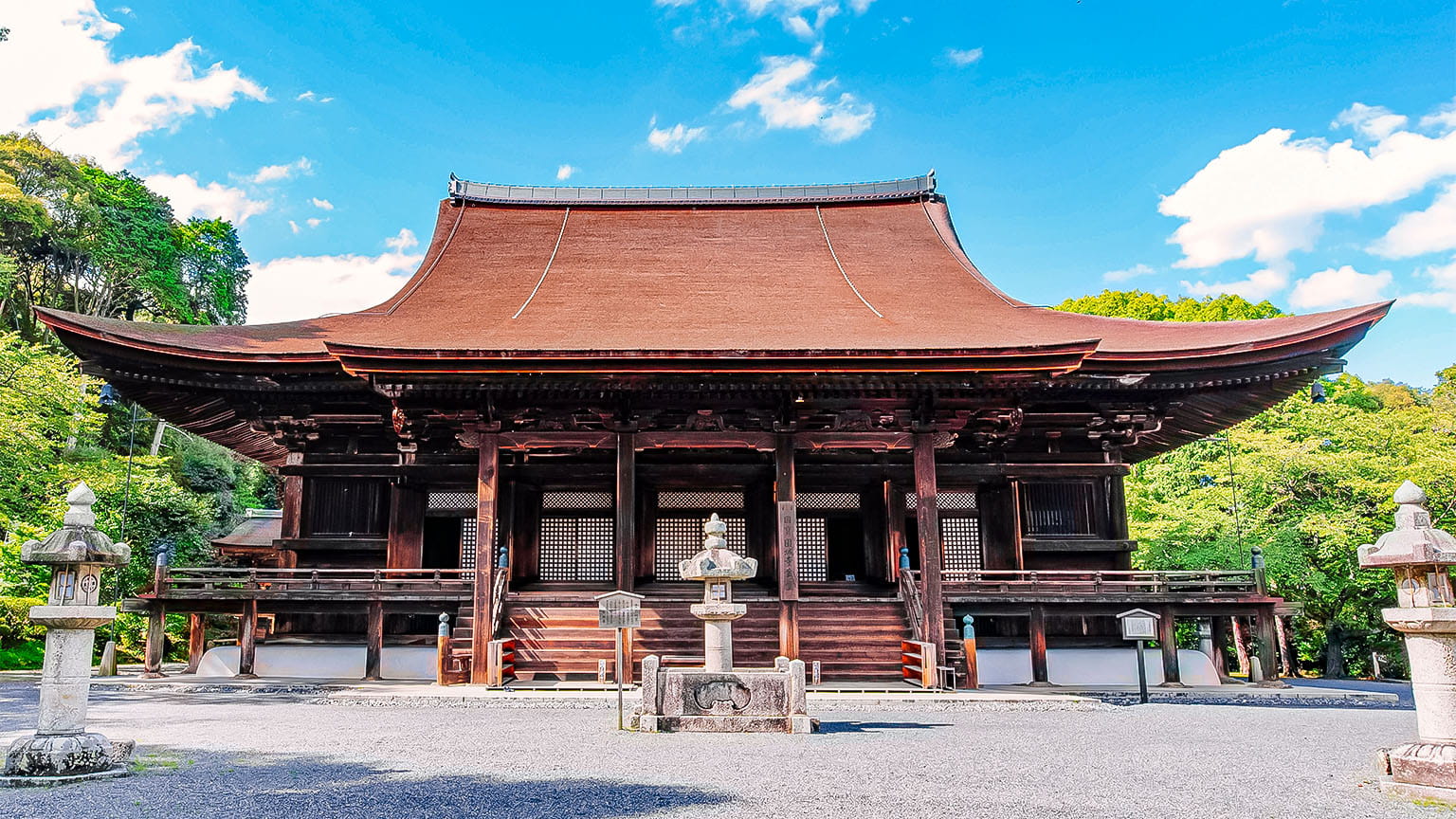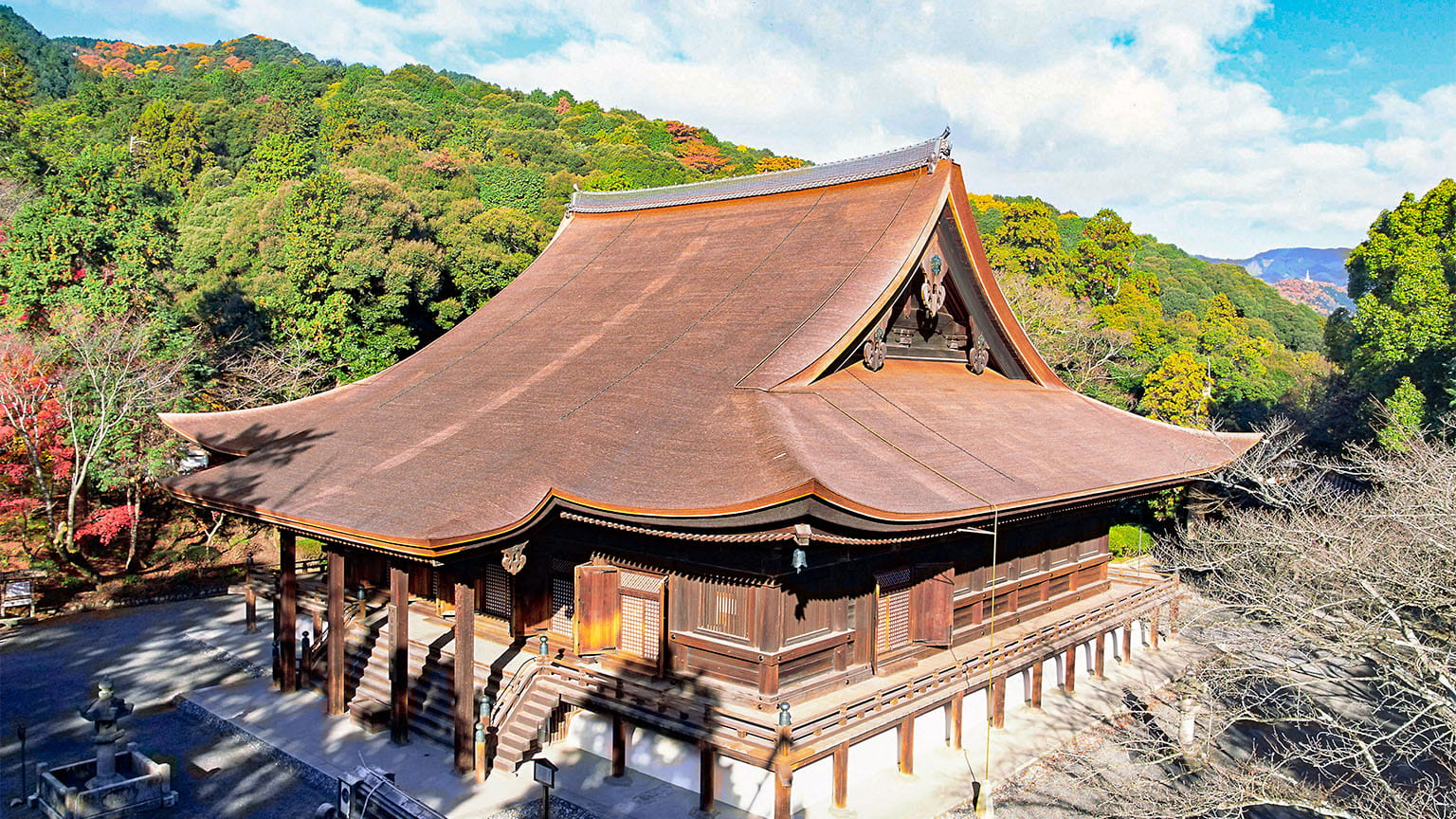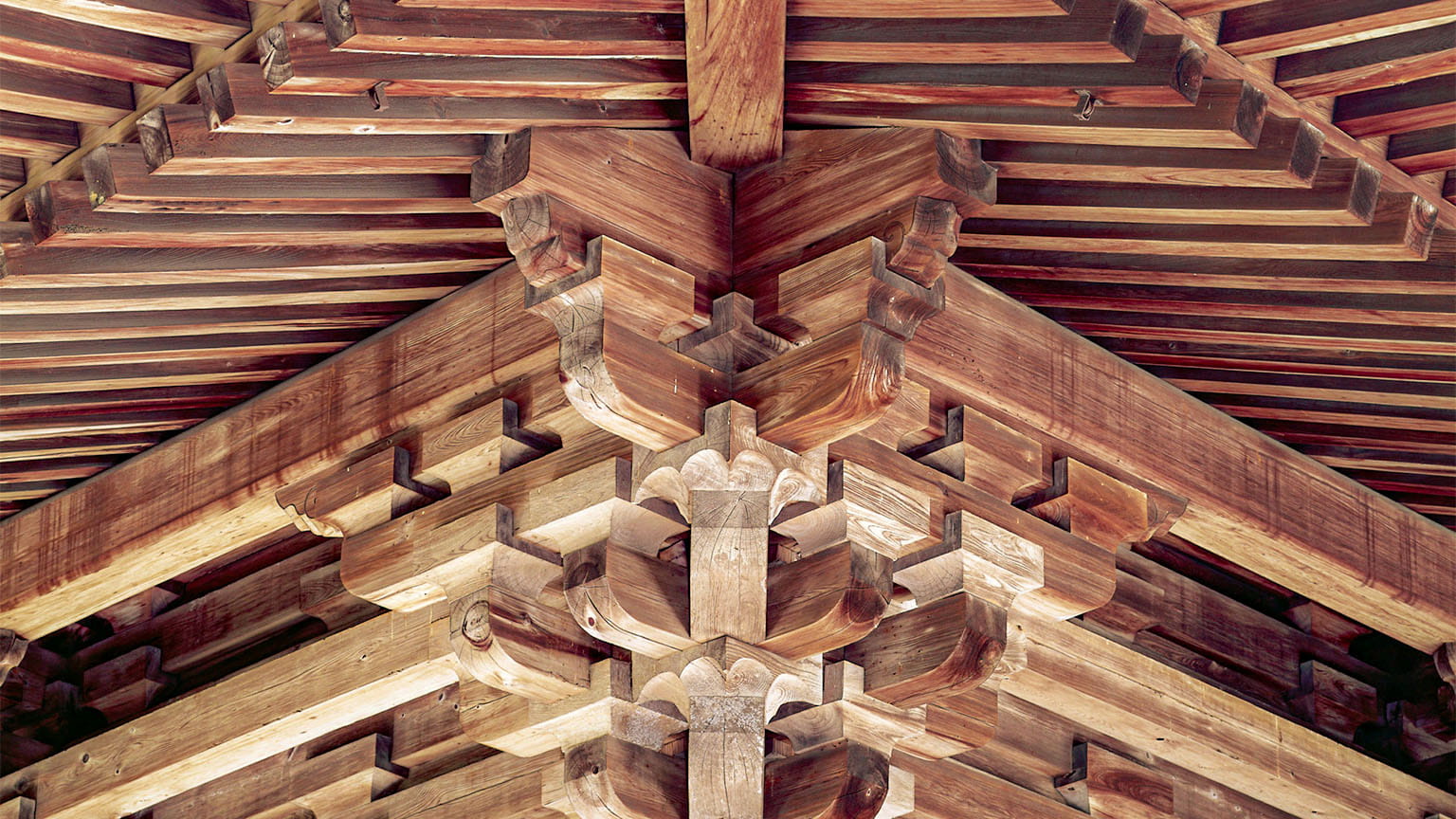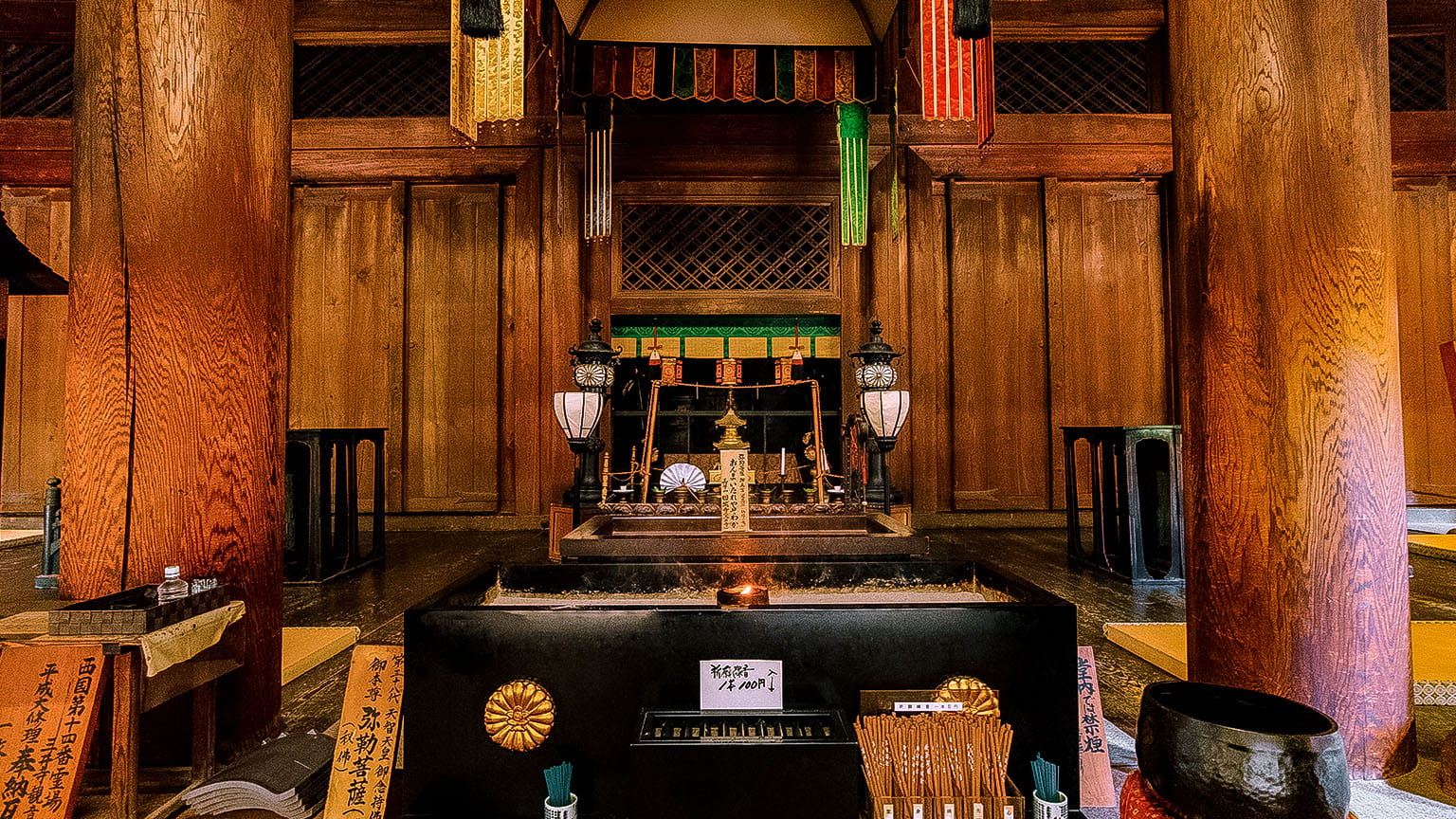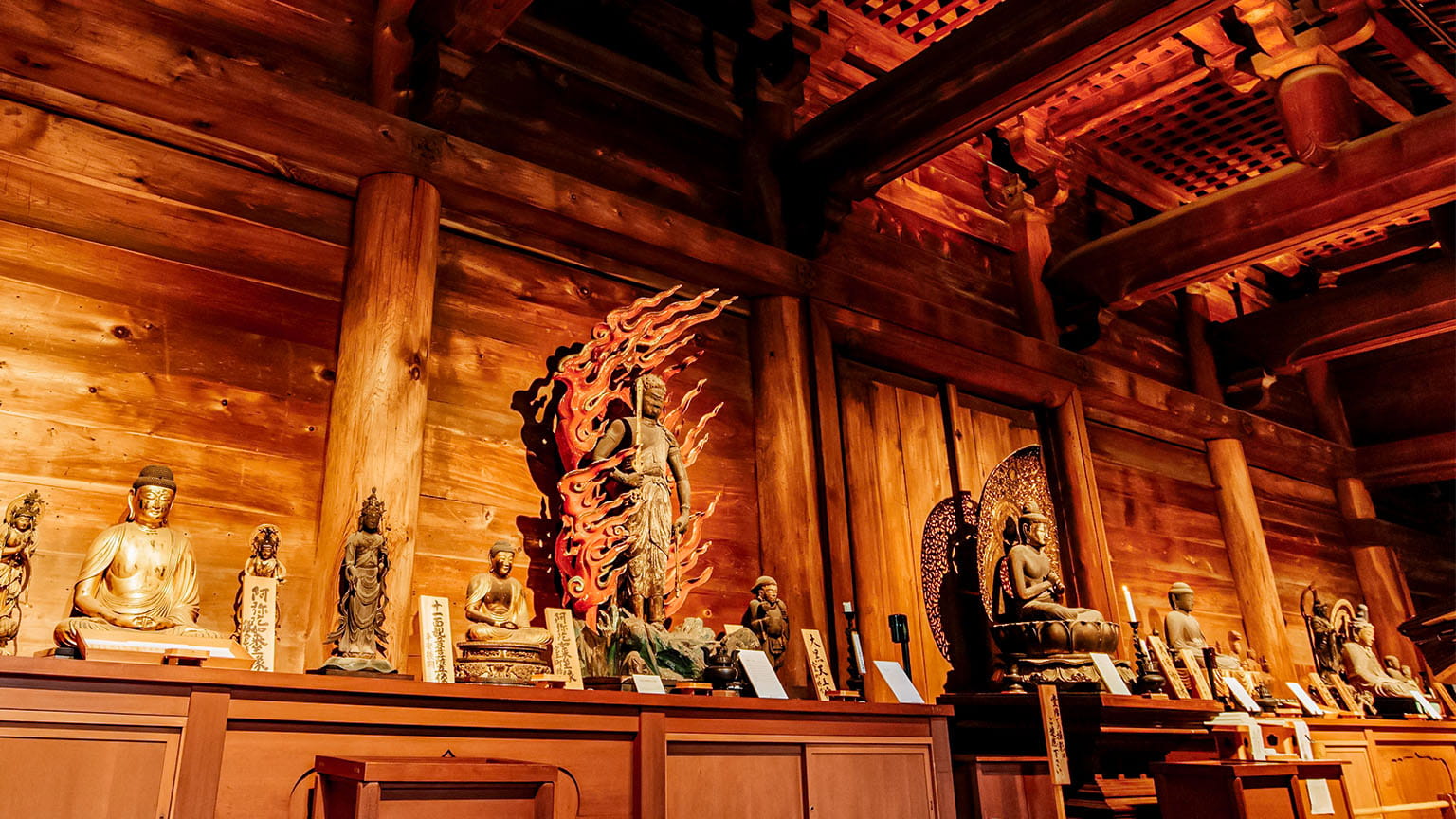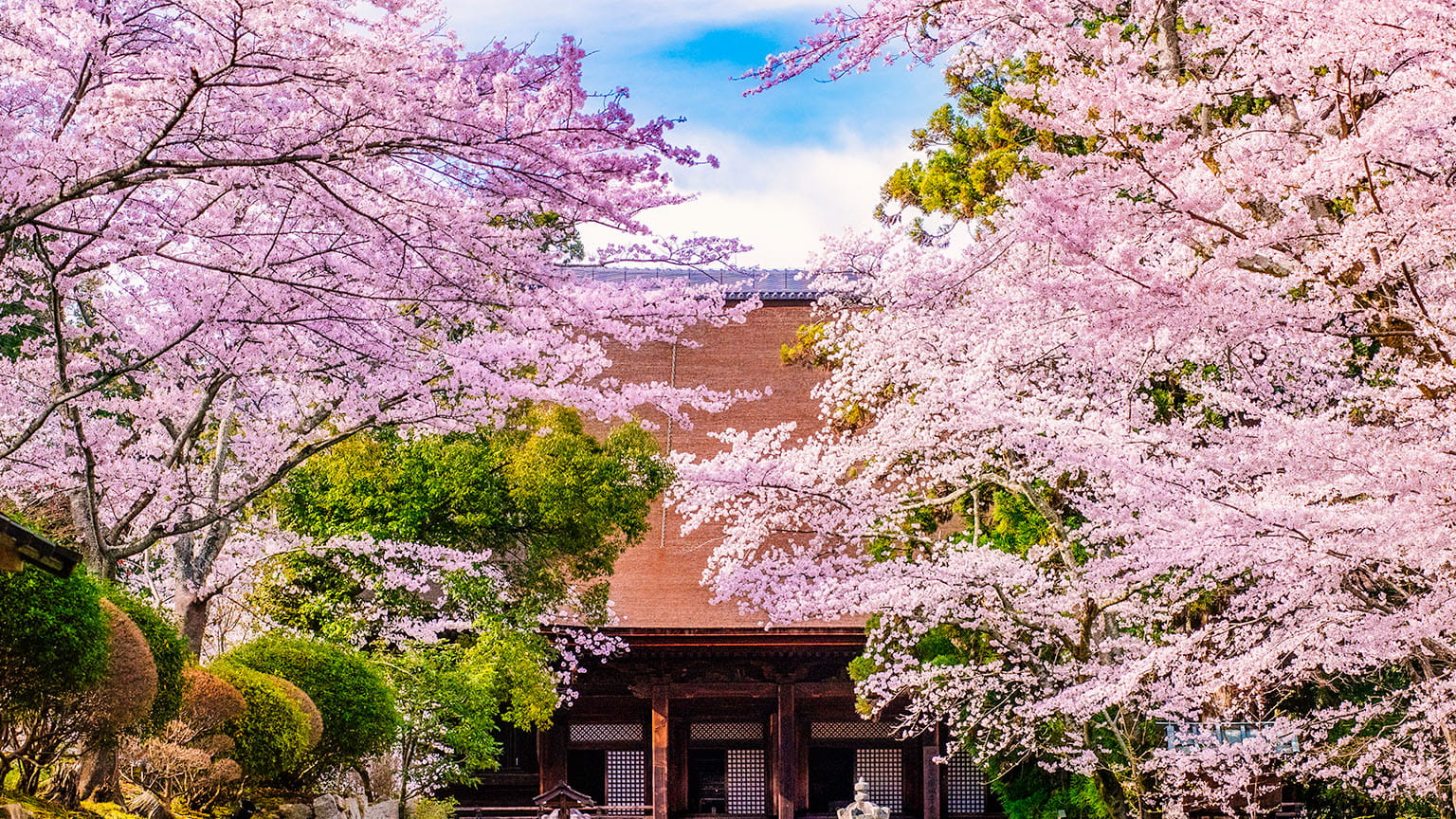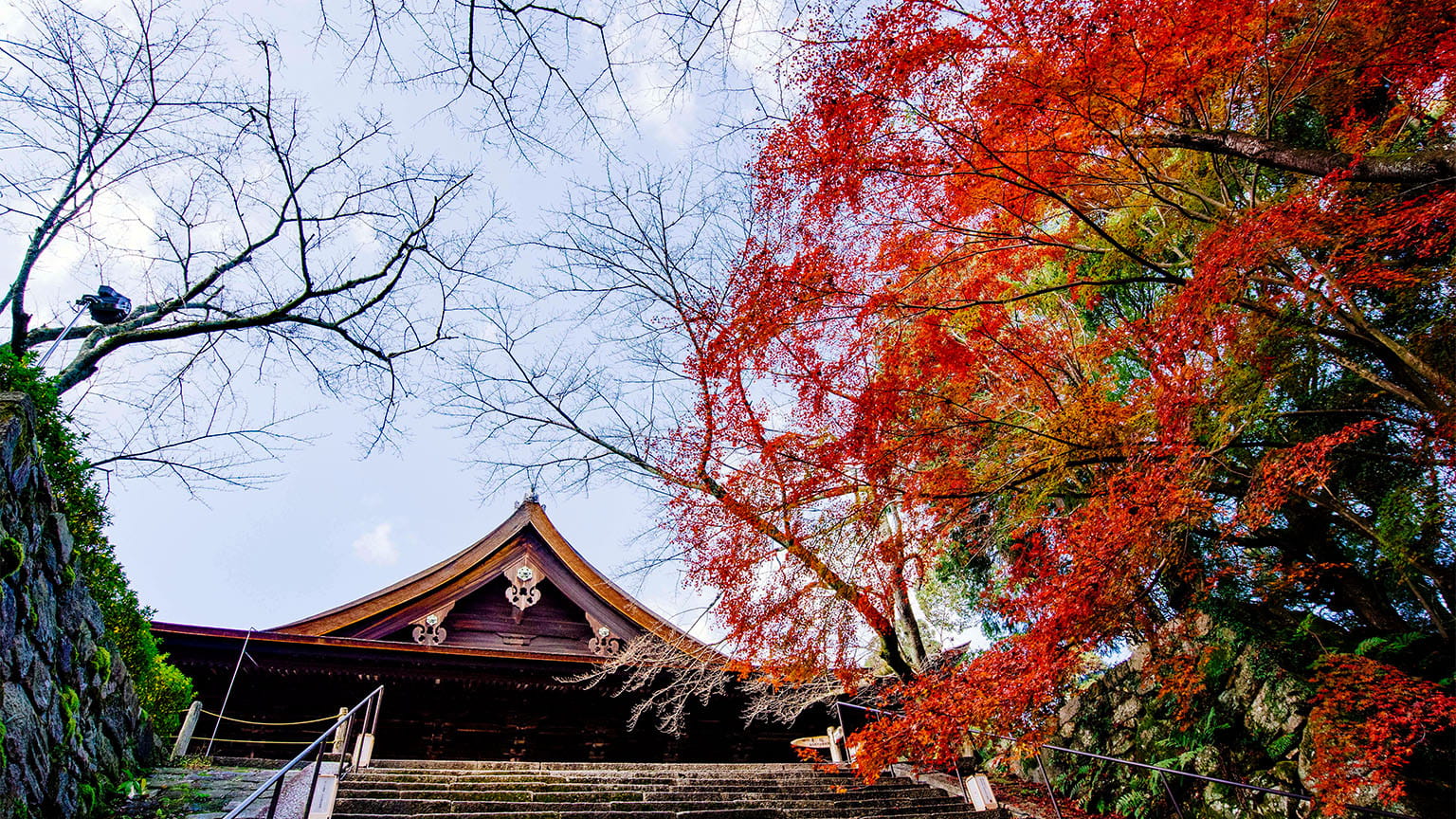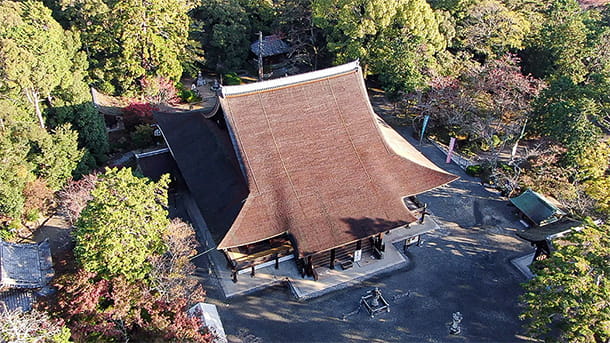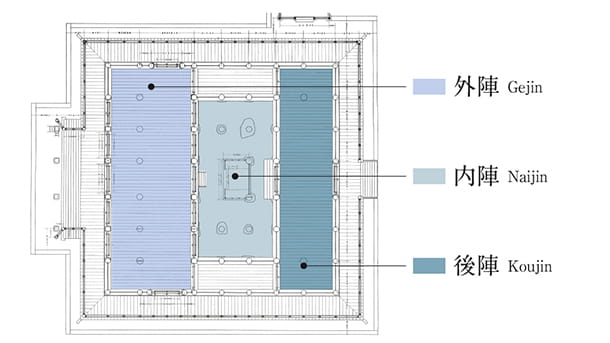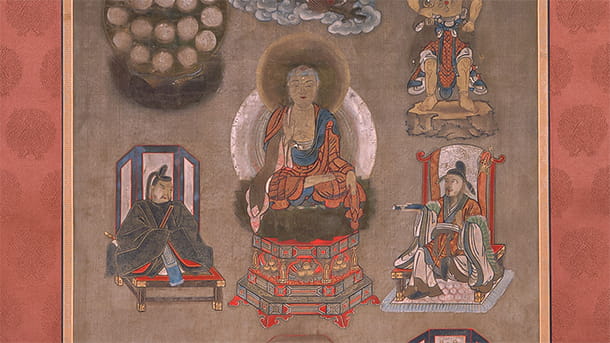“Tendaijimon sect”
The Tendaijimon sect is a Buddhist sect that respects Chisho Daishi Enchin (814–891), the fifth Tendai head priest, as its founder, and its head temple is Miidera Temple (Onjoji Temple) in Otsu City, Shiga Prefecture.
In the late 10th century, the disciples of Chiso Daishi broke away from the Tendai sect, the head temple of which is Hieizan Enryakuji Temple. From that event, two branches existed in the Tendai sect, thus the Tendai sect based in Mt. Hiei (Hieizan) became called the Sanmon branch, and the other, the Jimon branch.
“Main Hall”
A temple main building in which a principal image is enshrined. It is also called Kondo, Chudo, Butsuden, Mieido or Amidado, depending on the sect.
“Emperor Tenji”
Emperor Tenji (626–671) reigned in the mid-seventh century. He conspired with Nakatomi no Kamatari to destroy the Soga clan and resolutely carried out the Taika Reforms as the crown prince. After his mother, Empress Saimei died in 661, he ruled without official accession. In 667 he moved to Otsunomiya in Omi Province (present-day Shiga Prefecture) and acceded to the throne in the following year. He improved internal administration by creating Kogo-nenjaku (family register) and enacting the Omi Codes. (Reigned 668–671)
“Toyotomi Hideyoshi”
A warlord in the Azuchi-Momoyama period. First, he served to Oda Nobunaga, and as soon as Nobunaga died due to the Honnoji Incident in 1582, he declared himself as the successor, defeated his enemies and unified the country. From 1583, Hideyoshi began the construction of Osaka Castle, the castle tower of which has a lavish five-story structure on the outside and an eight-story structure inside that was suitable for the supreme ruler. While he was called Hotaiko, luxurious Momoyama culture, including tea ceremonies and paintings of the Kano school, flourished.
Relations between Miidera Temple and Hideyoshi were generally favorable; however, in 1595, his later years, he suddenly imposed an order to Miidera Temple to confiscate all of the assets belonging to the temple. After Hideyoshi’s death in August 1598, Miidera Temple was restored by his legal wife, Kita no Mandokoro.
“Kita no Mandokoro”
Generally, it used to refer to legal wives of nobles who were Sessho (a regent who acts on behalf of either a child Emperor or an empress regnant) or Kanpaku (a chief advisor for the Emperor). Later, it was used to call Kodai-in, the legal wife of Toyotomi Hideyoshi, in particular. After the death of Toyotomi Hideyoshi, she contributed to the restoration of Miidera Temple and reconstruction of the Main Hall.
“cypress bark roofing”
A roof made by the method where cypress bark is fixed by bamboo nails.
“gejin (outer sanctum), naijin (inner sanctum), and kojin (apse)”
“Maitreya”
Maitreya is a bodhisattva who will be a successor to Shakyamuni Buddha. Maitreya lives in Tusita heaven and is a future Buddha. Five trillion and sixty-seven million years after the death of Buddha, he will appear on Earth to save all living things who have not been saved by Buddha entirely by preaching at three assemblies, Ryuge sanne.


